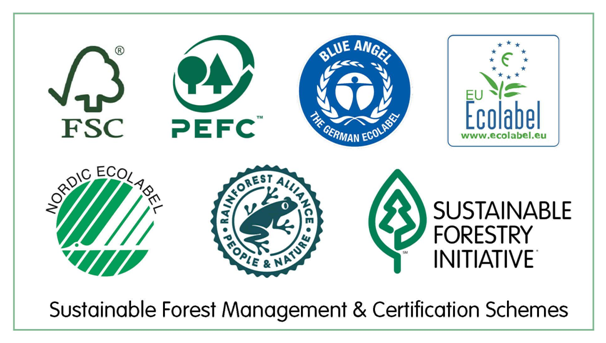Forest Certification
Context: As Forests absorb large amounts of carbon dioxide that is emitted in various economic activities, keeping a check on global warming, Several countries and corporations, keen to present an environment-friendly image try to ensure that they avoid consumption of any product that might be the result of deforestation or illegal logging. This is where the certification industry comes in — offering a multi-layer audit system that seeks to authenticate the origin, legality, and sustainability of forest-based products such as timber, furniture, handicraft, paper and pulp, rubber, and many more.
The global certification industry
- The roughly three-decade-old global certification industry started up as a way to establish, through independent third-party audits, whether forests were being managed in a sustainable manner.
- Over the years, a range of certifications have come to be offered for various activities in the forestry sector.
- There are two major international standards for sustainable management of forests and forest-based products.
- One has been developed by Forest Stewardship Council, or FSC and the other is by Programme for Endorsement of Forest Certifications, or PEFC. FSC certification is more popular and in demand, and also more expensive.
- Organisations like FSC or PEFC are only the developers and owners of standards — like, for example, the International Organisation of Standardisation (ISO) or Bureau of International Standards (BIS).
- They are not involved in the evaluation and auditing of the processes being followed by the forest managers or manufacturers or traders of forest-based products.
- The certification bodies often subcontract their work to smaller organisations. PEFC does not insist on the use of its own standards.
- Two main types of certification are on offer: forest management (FM) and Chain of Custody (CoC).
- CoC certification is meant to guarantee the traceability of a forest product like timber throughout the supply chain from origin to market.
Forest certification in India
- The forest certification industry has been operating in India for the last 15 years.
- Currently, forests in only Uttar Pradesh are certified. Forty one divisions of the UP Forest Corporation (UPFC) are PEFC-certified, meaning they are being managed according to standards endorsed by PEFC.
- These standards have been developed by the New Delhi-based nonprofit Network for Certification and Conservation of Forests (NCCF).
- Some other states too obtained certification, but subsequently dropped out. The Bhamragad forest division in Maharashtra was the first to obtain FSC certification for forest management.
- Many agroforestry projects, such as those run by ITC, and several paper mills too have forest management certification. The forests here are meant for captive use of the industry.
- There are a large number of CoC certifications, but the dropout rate is 40 percent.
- As of now, there are 1,527 valid CoC certifications by FSC, and 1,010 that are suspended, expired, or have been terminated.
India-specific standards
- India allows the export of only processed wood, not timber. In fact, the timber harvested from Indian forests is not enough to meet the domestic demand for housing, furniture, and other products.
- The demand for wood in India is 150-170 million cubic metres annually, including 90-100 million cubic metres of raw wood. The rest goes mainly towards meeting the demand for paper and pulp.
- India’s forests contribute just about five million cubic metres of wood every year.
- Almost 85 per cent of the demand for wood and wood products is met by trees outside forests (ToF). About 10 per cent is imported. India’s wood import bill is Rs 50,000-60,000 crore per year.
- Since ToF are so important, new certification standards are being developed for their sustainable management.
- PEFC already has certification for TOF and last year, FSC came up with India-specific standards that included certification for ToF. Environment Minister Bhupender Yadav launched the FSC’s India standards in June 2022.
Does the government have its own standards?
- Long before private certification bodies set up operations in India, the government had moved to define national standards for the management of forests.
- Based on the recommendations of an expert committee in 2005, the Environment Ministry had asked relevant institutions like the Bhopal-based Indian Institute of Forest Management to draw up national forest standards. Considerable work was done, and a draft Cabinet note seeking the government’s approval for setting up such standards was drawn up. However, the effort did not come to fruition.
- When the NCCF came into being in 2015, offering PEFC certification in India, the Environment Ministry nominated an officer on the governing board, lending it official legitimacy. But the nomination was later withdrawn. Last year, the Ministry associated itself with FSC, by launching its new India standards.
Criticism
- The role of private certification agencies, especially with regard to forest management certification, has come under sustained criticism from a group of influential retired forest officials.
- In response to this criticism, and also to the increasing complaints about corruption in the private certification space, the Ministry has restarted efforts to develop official national forest standards.
- The government says the indigenous system of certifications will be simple, transparent, and easy to adopt, even by small farmers and tree growers. The benchmarks will adhere to internationally accepted norms, but will take into account India’s national circumstances.
| Practice Question
1. Deforestation can hamper climate change initiatives. What role forest certification industry play to prevent the crisis? |




